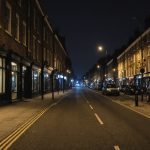Understanding Night-Time Curfews and Urban Wildlife
Night-time curfews have become an integral part of urban conservation strategies, crucially affecting urban wildlife. Implemented primarily for maintaining public order, these curfews also provide unforeseen benefits to wildlife, creating a safer, more tranquil environment. During these hours, cities experience a significant reduction in human activity, allowing for a noticeable shift in wildlife behavior.
Urban environments pose a myriad of challenges to wildlife. From habitat fragmentation to light and noise pollution, animals often struggle to adapt. However, night-time curfews offer a temporary respite. This quietude from reduced human movement allows animals to forage, hunt, and move without interference.
This might interest you : Protecting native wildlife: the role of uk traffic laws in reducing roadkill
The relationship between reduced human activity and wildlife behavior becomes quite evident. Night-time curfews, although not initially aimed at conservation, inadvertently support wildlife by decreasing disturbances. This shift enables researchers to better understand animal patterns, informing further conservation strategies.
Additionally, these periods highlight the dynamic interplay between urban planning and ecology. As cities grow, understanding and integrating conservation efforts into urban frameworks becomes crucial. Night-time curfews, while temporary, shed light on this balance, emphasizing the need for thoughtful urban planning to promote biodiversity and harmony.
This might interest you : Must-have plants for uk gardens: key species to support native butterfly habitats
Evidence Supporting the Benefits of Night-Time Curfews
Night-time curfews have been increasingly recognised for their positive impact on wildlife conservation. Recent research findings illustrate these benefits, revealing that curfews significantly reduce human disturbances, allowing wildlife to thrive. Annotated studies detail various locations where restrictions have led to surprisingly improved biodiversity. In regions implementing night-time curfews, nocturnal animals are observed reclaiming habitats, demonstrating how subtle changes in human behaviour can encourage natural processes.
Consider a compelling case study from a nature reserve where curfews resulted in a notable increase in nocturnal wildlife activity. Researchers noted increased sightings of species such as foxes and owls, suggesting that uninterrupted night conditions enable wildlife to follow their natural patterns. The absence of human interference at critical times promotes healthier ecosystems, supporting species diversity.
Experts in the field highlight the correlation between reduced human presence and enhanced wildlife wellbeing. They emphasise how curfews allow animals the opportunity to engage in vital behaviours free from human stressors. By fostering an environment where wildlife can thrive, night-time curfews emerge as a practical solution to support conservation efforts and biodiversity management. Such initiatives reflect a growing understanding of the essential balance between human activity and natural ecosystems.
Case Studies from the UK
Exploring the implementation of night-time curfews within UK cities provides valuable insights into their impact on urban wildlife recovery. Such initiatives demonstrate varied successes across different locales.
City Implementation: A Closer Look
Several cities in the UK have embraced night-time curfews, showcasing significant improvements in local wildlife populations. For instance, specific urban areas have reported increased sightings of foxes, hedgehogs, and bats, which benefit enormously from reduced human interference. These successful curfews showcase the power of well-enforced regulations to rejuvenate city ecosystems.
Community Engagement and Support
Local communities play a pivotal role in the successful implementation of curfews. Residents who actively engage in supporting these initiatives bring about substantial positive outcomes. Community-driven efforts not only advocate for animal habitats but also enhance public awareness and promote responsible citizen behaviour.
Lessons Learned from UK Initiatives
Though implementing curfews comes with challenges, such as resistance from certain community groups and logistical hurdles, effective strategies have been developed. Lessons from the UK highlight the importance of transparent communication with communities and collaboration with wildlife conservationists. These approaches ensure smoother adoption and greater urban wildlife recovery, cementing the long-term benefits of peaceful coexistence between humans and nature.
Broader Implications for Urban Planning and Biodiversity
Night-time curfews provide a unique opportunity to rethink urban planning strategies, highlighting the benefit of holistic approaches that can integrate wildlife considerations into city designs. Implementing measures that align human activities with nature’s rhythms can greatly enhance biodiversity. For instance, curfews can reduce disturbances to nocturnal wildlife, offering insights into sustainable practices that prioritize environmental health alongside urban growth.
Wildlife-friendly city designs are increasingly important as urbanization accelerates. By fostering habitats and corridors within urban areas, cities can support biodiversity while maintaining necessary urban infrastructure. This involves creating green roofs, preserving natural landscapes, and installing wildlife crossings, which help maintain an ecological balance.
Biodiversity conservation offers significant long-term benefits for urban areas, including resilient ecosystems, improved air and water quality, and enhanced aesthetic and recreational value. Such benefits are crucial as they contribute to residents’ overall well-being and reduce urban heat island effects, building more sustainable and resilient cities.
In summary, integrating nature into urban landscapes requires careful planning and consideration. By valuing biodiversity alongside urban development goals, cities can ensure a sustainable future that promotes both ecological and human prosperity. Incorporating wildlife considerations in urban planning can bridge the gap between urban needs and environmental conservation.
Practical Advice for Communities Considering Night-Time Curfews
Communities looking into implementing curfews must first assess the actual need. This involves evaluating community guidelines and local circumstances, such as crime rates or disturbances, to determine if a curfew aligns with the community’s goals.
Once a decision is made, effectively communicating the curfew’s benefits to residents is crucial. This communication should highlight aspects like wildlife protection and improved safety. Understanding and addressing concerns can foster acceptance. For instance, organising community meetings or distributing informational pamphlets can help clarify the necessity and expected outcomes.
To understand the impact, it is advisable to set up measures for monitoring wildlife responses post-implementation. Engaging wildlife experts and utilising technology to track changes in local wildlife behavior ensures accurate data collection. This data not only helps assess the curfew’s success but also aligns the community’s actions with broader ecological objectives.
These steps create an actionable roadmap, balancing human activity with sustainability. Consequently, communities can improve human safety and contribute positively to the environment without sacrificing democratic decision-making processes.
Overview of Night-Time Curfews
Night-time curfews are regulatory measures designed to restrict movement and activities during night hours. Their primary purpose is often to reduce urban disturbances, maintain public order, and protect both human communities and urban wildlife. Curfews may be established in reaction to emergencies or as preventive measures to enhance environmental conservation.
Historically, curfews have been used in urban settings since ancient times. For instance, medieval cities used bell systems to signal lockdowns when darkness fell, thus maintaining safer public spaces. In more modern contexts, cities may impose curfews following natural disasters or during civil unrest. These curfews help manage nighttime activities and address immediate safety concerns.
The relationship between night-time curfews and wildlife safety is increasingly acknowledged. Urban environments, bustling with nocturnal human activity, can disrupt native wildlife behavior, leading to habitat displacement. Implementing curfews can offer periods of reduced human presence, allowing urban wildlife to navigate their ecosystems safely. Such conservation efforts help mitigate human-wildlife conflicts, supporting healthier wildlife populations within cityscapes.
In essence, night-time curfews serve as practical tools not only for maintaining human order but also as instruments for conserving urban ecosystems in an ever-developing world.
Impact of Night-Time Curfews on Urban Wildlife
Night-time curfews can significantly impact urban ecosystems by positively affecting local wildlife populations. With reduced human activity during these hours, animals benefit from less disturbance, enabling them to thrive in urban settings.
Biodiversity often increases as a result of these curfews. Many species reclaim their territories when human presence declines, leading to a healthier ecosystem balance. For example, research indicates a noticeable rise in sightings of various species during curfews, suggesting wildlife recovery across cities.
Reduced human activity aids animal behaviour by limiting noise and light pollution. This fosters natural behaviours like foraging and breeding, essential for biodiversity. For instance, researchers have documented nocturnal animals venturing into previously abandoned urban areas due to quieter streets.
Statistical insights on wildlife recovery from different cities highlight these trends. Studies report a significant uptick in both animal populations and species diversity. This evidence underscores the beneficial impact curfews have had on wildlife conservation efforts in urban environments.
In summary, night-time curfews play a crucial role in enhancing urban ecosystems and promoting biodiversity, ultimately aiding in the wildlife conservation mission.
Research Findings on Night-Time Curfews
Understanding the intricate dynamics between night-time curfews and ecological impacts is pivotal. Scientific studies have delved into these dynamics, providing insights into how curfews affect various aspects of urban planning and ecological research.
Key Studies on Wildlife Benefits
Several key studies illustrate the advantages of night-time curfews on wildlife, highlighting changes in behavior and population health. Notably, there’s evidence suggesting that many species benefit from reduced human activity, experiencing a resurgence in areas previously dominated by urban intrusion. Research indicates a marked improvement in animal activity during curfew periods, showcasing the importance of time restriction in urban areas.
Findings on Urban Ecosystem Health
Investigating urban ecosystem health, ecological research supports the idea that curfews bring positive changes to the environment. By minimizing disturbances, cities experience enhanced air quality and noise reduction, contributing to a healthier ecosystem. This highlights the relevance of integrating curfews in future urban planning strategies.
Longitudinal Studies of Species Adaptation
Long-term studies focus on how species adapt to altered urban planning frameworks. These studies reveal fascinating insights, showing adaptive strategies in species over time. According to collected data and metrics, wildlife shows a gradual trend towards thriving in redefined urban landscapes, illustrating the adaptability and resilience of urban wildlife in response to regulatory measures.
Expert Opinions and Case Studies
Urban wildlife curfews have garnered a lot of attention from ecologists who provide crucial insights into their effectiveness. Many experts highlight that these initiatives can play a vital role in preserving biodiversity in densely populated areas. For instance, curfews allow nocturnal animals to move safely across urban landscapes without the usual human disturbances.
Successful Urban Wildlife Initiatives
Numerous case studies from cities within the United Kingdom illustrate the success of implementing these curfews. In one city, the introduction of an urban wildlife curfew resulted in a notable increase in the population of bats and foxes. Such examples showcase how specific measures, like reducing artificial lights and restricting noise levels, can have immediate and positive effects on local wildlife.
Communal Benefits from Expert Analysis
Interviews with community leaders have underscored the broader benefits urban wildlife initiatives bring to local residents. By stabilizing the natural ecosystem, these measures have also improved health and well-being outcomes for humans. Residents often find themselves enjoying quieter nights and a closer connection with nature in their daily lives, leading to a heightened appreciation of urban greenery.
These successful examples of urban wildlife curfews highlight the potential of curfews to not only protect wildlife but also enrich community life.
Specific Benefits to Ecosystems
Curfews, when implemented thoughtfully, play a notable role in enhancing urban biodiversity. By reducing human activity during designated hours, these measures allow local wildlife and plant species to thrive without the disturbances typically caused by urban life. This peace benefits various organisms, contributing to the complex web of ecosystem services that cities rely on, such as pollination, air purification, and water filtration.
With fewer disturbances, the natural world has a chance to regroup, leading to positive environmental impacts. Reduced noise and pollution levels mean that birds and other fauna can communicate and navigate their surroundings more effectively. This strengthened communication boosts species’ survival rates, directly influencing the sustainability of urban ecosystems.
Moreover, long-term habitat preservation is achievable through such initiatives. By halting activities during crucial hours, urban planners can indirectly promote habitat restoration, allowing flora and fauna to adapt and evolve in a more conducive environment. Over time, this contributes to an ecosystem’s overall stability and health, ensuring that both human and non-human residents benefit from a balanced coexistence. Thus, implementing curfews can offer significant advantages for urban environments, fostering healthier, more resilient ecosystems.
Challenges and Considerations
When discussing policy challenges associated with urban developments, it is crucial to consider the potential community response. Local residents and businesses often express concerns, which can stem from a variety of factors, including perceived threats to their way of life or economic interests. Understanding these concerns and predicting how they might manifest can aid in the development of proactive strategies to address them.
One significant implementation issue is the logistical complexity involved in enforcing regulations such as curfews. Managing the compliance of all stakeholders while minimising disruptions requires meticulous planning and efficient resource allocation. Local authorities often face challenges in effectively communicating the rationale and benefits of such policies to the community, resulting in possible resistance.
It’s also vital to explore alternative solutions that promote coexistence between new policies and existing community structures. This might involve collaborative forums for discussion, where stakeholders can voice concerns, share perspectives, and work towards consensus. Encouraging a culture of mutual understanding can lead to more sustainable and acceptable outcomes.
In summary, addressing these challenges requires a balanced approach, acknowledging both the necessity of new policies and the legitimate concerns of local communities. By fostering dialogue and understanding, communities can navigate these complexities more effectively.
Policy Recommendations for Urban Planning
Urban policy plays a crucial role in shaping sustainable environments while ensuring the well-being of both humans and wildlife. Effective government initiatives should focus on innovative approaches to urban development. This involves collaborative efforts between urban planners and ecologists to balance infrastructural growth with wildlife conservation strategies.
Proposed policies for effective curfew implementation can aid in protecting nocturnal wildlife from urban noise and light pollution. A well-structured curfew can significantly reduce disruptions in local ecosystems, enhancing wildlife conservation efforts. Policymakers must consider the ecological impact of urban activities when crafting regulations, ensuring the protection of natural habitats.
Collaboration between urban planners and ecologists is essential for developing strategies that take into account the needs of both urban populations and local wildlife. This partnership can lead to urban designs that incorporate green spaces and wildlife corridors, promoting biodiversity within city limits.
Strategies for community engagement and education are equally important. Informing residents about the significance of urban biodiversity and involving them in conservation activities can foster a sense of responsibility and pride. Community-based programmes and workshops can educate citizens on how their daily actions can affect local ecosystems, paving the way for a more sustainable urban environment.
Comparisons with Global Initiatives
Looking broadly, international examples offer illuminating insights into urban wildlife management. Countries like Australia and Canada have successfully implemented night-time curfews to protect urban ecosystems. These initiatives illustrate global best practices in balancing urban growth with ecological preservation.
In Australia, several cities have adopted wildlife-friendly policies that restrict lighting and vehicular movement at night. The results? A demonstrable increase in native species activity. This case exemplifies how targeted measures can facilitate wildlife-friendly urban settings.
However, not all initiatives have yielded desired outcomes. In contrast, certain cities faced challenges due to inadequate planning and public resistance. A notable example is Singapore, where initial attempts at curfews were met with logistical hurdles, revealing that public engagement and effective communication are vital components of success.
Lessons learned from these international case studies emphasize the importance of adaptability. Tailoring policies to specific urban contexts is crucial, as what works in one city may not be applicable in another. Therefore, drawing inspiration from these global best practices involves not just adopting strategies, but also understanding and customizing them to fit unique ecological and social landscapes.











